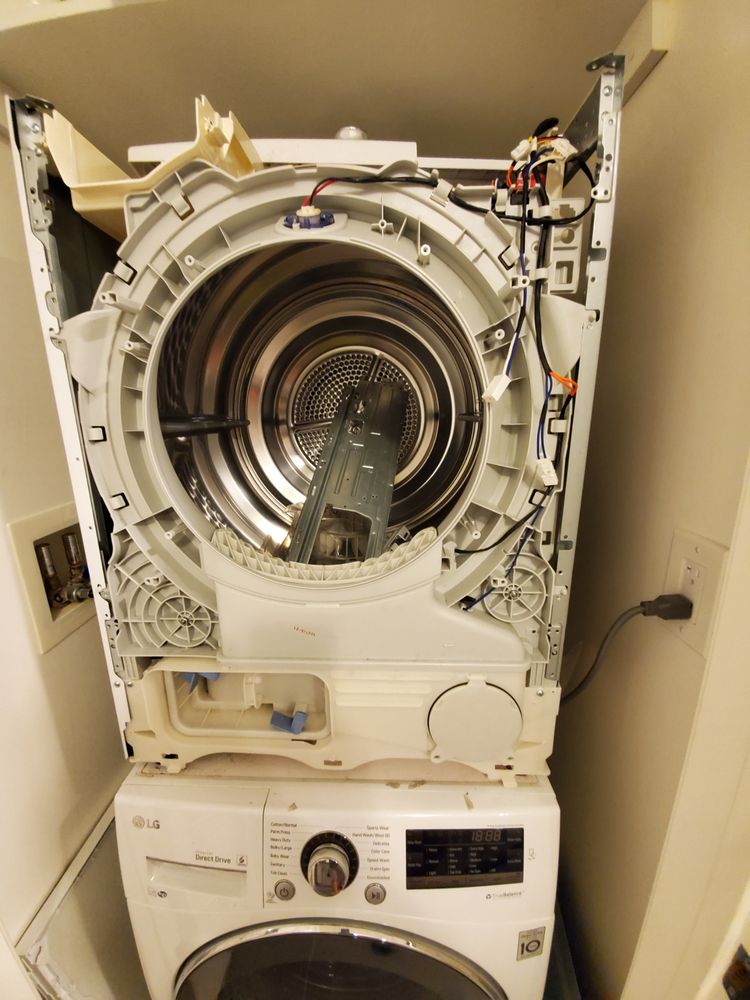Tips By Swift Appliance Repair
Dryers are essential appliances in our homes, saving us time and effort in managing laundry. However, like any appliance, they require regular maintenance to ensure optimal performance and longevity. Neglecting dryer maintenance can lead to inefficiency, higher energy bills, and even safety hazards. In this blog post, we’ll explore important dryer maintenance tips that will help keep your appliance running smoothly and efficiently.
1. Clean the Lint Trap After Every Load
One of the simplest yet most important maintenance tasks is cleaning the lint trap after each use. Lint buildup not only reduces dryer efficiency but can also pose a fire hazard. Be sure to remove the lint from the trap before every load to ensure proper airflow, which helps the dryer work effectively.
2. Inspect and Clean the Venting System
Over time, the venting system that carries moist air outside can accumulate lint and debris. This can restrict airflow, causing your dryer to overheat and potentially leading to a fire. To prevent this, inspect your venting system regularly and clean it at least once a year. Consider hiring a professional for thorough vent cleaning if you notice clogs or reduced drying performance.
3. Check the Dryer Drum and Seals
Inspect the drum for any buildup of fabric softener or detergent residues, which can interfere with its operation. Additionally, check the door seals for damage or wear. A damaged seal can cause air leaks, leading to longer drying times. If you notice any issues, consider replacing seals or accessing them for a deep clean.
4. Level Your Dryer
An unlevel dryer can cause excessive noise and vibrations, leading to wear and tear on internal components. Use a level to check that your dryer is even on all sides. Most dryers have adjustable legs, so you can easily make adjustments to ensure stability.
5. Keep the Area Around the Dryer Clean
A clean and clutter-free area around your dryer can improve ventilation and reduce the risk of debris entering the appliance. Make sure to keep the surrounding space free from clutter, and regularly sweep or vacuum the area to prevent dust and lint accumulation.
6. Schedule Professional Maintenance
While many maintenance tasks can be done at home, it’s beneficial to schedule a professional inspection and maintenance service at least once a year. Professionals can thoroughly clean the interior components, including the blower wheel, and check for any underlying issues that may not be easily visible.
7. Monitor Performance and Address Issues Promptly
Pay attention to how your dryer performs. If you notice any unusual sounds, longer drying times, or clothes that are still damp after a full cycle, address these issues promptly. Ignoring problems can lead to more significant repairs down the line. Consult a professional if necessary to avoid costly repairs.
8. Ensure Proper Use of the Dryer
Follow the manufacturer’s instructions for loading the dryer. Avoid overloading, as this can lead to inefficient drying and strain on the motor. Also, be mindful of the materials you’re drying; items like large blankets can often perform better if dried separately.
Conclusion
By taking the time to perform regular maintenance on your dryer, you can extend its lifespan, increase efficiency, and ensure safe operation. Establishing a routine for cleaning and inspecting your appliance will not only save you money in the long run but also help you avoid potential safety hazards. Remember, a well-maintained dryer is a key component of any efficient laundry room!
If you encounter any issues or need assistance with dryer maintenance, don’t hesitate to reach out to a professional repair service. Keeping your dryer in peak condition will help you enjoy the convenience it brings to your daily life.
Crafting Informative and Cohesive Body Content
Within the body of your blog post lies the heart of your message. Break down your content into coherent sections, each with a clear heading that guides readers through the narrative. Dive deep into each subtopic, providing valuable insights, data, and relatable examples. Maintain a logical flow between paragraphs using transitions, ensuring that each point naturally progresses to the next. By structuring your body content effectively, you keep readers engaged and eager to learn more.
Powerful Closures: Leaving a Lasting Impression
Concluding your blog post isn’t just about wrapping things up – it’s your final opportunity to leave a strong impact. Summarize the key takeaways from your post, reinforcing your main points. If relevant, provide actionable solutions or thought-provoking questions to keep readers thinking beyond the post. Encourage engagement by inviting comments, questions, or sharing. A well-crafted conclusion should linger in your readers’ minds, inspiring them to explore further or apply what they’ve learned.


